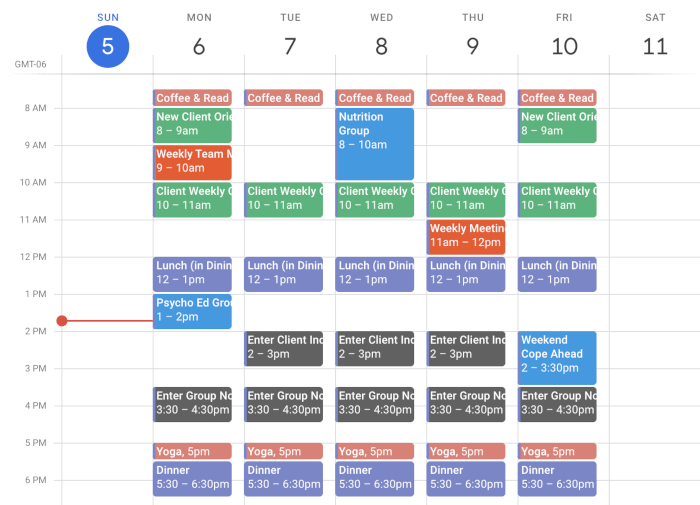You’ve been there before: confidently promising a project will take two weeks, only to find yourself scrambling three weeks later with mounting deadlines and stressed stakeholders. This chronic underestimation isn’t a character flaw—it’s a well-documented cognitive bias called planning fallacy that affects professionals across all industries. According to recent research published in the Journal of Behavioral Decision Making, approximately 70% of projects exceed their original time estimates, with software development projects showing even higher rates of delay.
The stakes are higher than ever in today’s fast-paced business environment. Poor time estimation doesn’t just create inconvenience; it erodes trust, inflates budgets, and can derail entire initiatives. The good news? There’s a planning fallacy fix that combines proven psychological insights with practical project management techniques. By understanding why our brains systematically underestimate task duration and implementing six research-backed strategies, you can transform your estimation accuracy and project success rates.
What Is Planning Fallacy and Why It Sabotages Your Projects
Planning fallacy represents our persistent tendency to underestimate the time, costs, and risks associated with future actions while simultaneously overestimating their benefits. First identified by psychologists Daniel Kahneman and Amos Tversky in 1979, this cognitive bias affects everyone from individual contributors managing daily tasks to executive teams overseeing multi-million-dollar initiatives.
The phenomenon manifests in several predictable ways across professional environments. Scope creep becomes inevitable when initial estimates fail to account for complexity that emerges during execution. Teams find themselves constantly firefighting instead of following structured workflows, leading to decreased quality and increased stress levels.
Research from the Project Management Institute indicates that organizations waste an average of $97 million for every $1 billion invested due to poor project performance, with inadequate time estimation serving as a primary contributing factor. This massive financial impact extends beyond immediate project costs to include opportunity costs, resource reallocation expenses, and potential market share losses from delayed product launches.
The most insidious aspect of planning fallacy lies in its persistence. Even when individuals and teams experience repeated estimation failures, they continue making overly optimistic predictions for future projects. This pattern creates a destructive cycle where unrealistic expectations become embedded in organizational culture, making accurate project planning increasingly difficult to achieve.
The Hidden Psychology Behind Chronic Underestimation
Understanding the psychological mechanisms driving planning fallacy provides crucial insights for developing effective countermeasures. Optimism bias plays a central role, as our brains are naturally wired to focus on positive outcomes while minimizing potential obstacles. This evolutionary adaptation that once helped humans take necessary risks now sabotages modern project planning.
The availability heuristic further compounds estimation errors by making us overweight recent, memorable experiences while undervaluing comprehensive historical data. When estimating project duration, we tend to recall our most successful past projects rather than calculating realistic averages that include delays and complications.
Cognitive load represents another critical factor often overlooked in traditional project management approaches. Research published in Cognitive Psychology demonstrates that our estimation accuracy deteriorates significantly when we’re simultaneously juggling multiple priorities—exactly the situation most professionals face daily.
- Focusing illusion: Overemphasis on specific project aspects while ignoring others
- Anchoring bias: Excessive reliance on initial time estimates
- Coordination neglect: Underestimating communication and collaboration overhead
- Temporal discounting: Difficulty accurately perceiving future time constraints
These psychological factors operate below conscious awareness, making them particularly challenging to overcome through willpower alone. Effective solutions must account for these automatic mental processes by implementing systematic approaches that bypass our cognitive limitations rather than fighting against them.
Planning Fallacy Fix: Reference Class Forecasting Method
Reference class forecasting offers one of the most powerful evidence-based approaches for overcoming planning fallacy. Developed by Daniel Kahneman and refined through decades of applied research, this method shifts focus from internal project details to external historical data from comparable initiatives.
The process begins by identifying a reference class—a category of similar projects that share key characteristics with your current initiative. For software development, this might include projects with comparable feature complexity, team size, and technical stack. Marketing campaigns could be grouped by budget range, target audience size, and channel mix.
Next, gather comprehensive historical data about duration, costs, and outcomes for projects within your reference class. This step requires looking beyond your immediate team or organization to industry benchmarks and published case studies. The Project Management Institute’s annual reports provide valuable baseline data across multiple sectors.
- Define project parameters: Scope, team composition, constraints
- Identify comparable projects: Search internal records and industry databases
- Analyze distribution patterns: Calculate median timelines, not just averages
- Apply statistical ranges: Use 25th, 50th, and 75th percentiles for scenarios
- Adjust for unique factors: Make minimal, evidence-based modifications
Studies show that reference class forecasting improves estimation accuracy by 20-30% compared to traditional bottom-up planning methods. The key lies in maintaining discipline to prioritize external data over internal optimism, even when the results seem pessimistic compared to initial hopes.
Breaking Down Complex Projects with Work Breakdown Structure
Work Breakdown Structure (WBS) serves as a fundamental tool for combating planning fallacy by decomposing overwhelming projects into manageable, estimatable components. This hierarchical decomposition reveals hidden complexities and dependencies that contribute to chronic underestimation in high-level project planning.
Effective WBS implementation follows the 100% rule, ensuring that each level fully represents all work required while avoiding overlap between components. Start with major deliverables, then progressively break them down until reaching work packages that individual team members can realistically estimate and complete within 8-80 hours.
The granularity sweet spot varies by project complexity and team experience, but research from PMI suggests that work packages exceeding 40 hours show significantly higher estimation errors. Tasks under 4 hours, conversely, create excessive administrative overhead without meaningful accuracy improvements.
Integration with modern project management platforms like Monday.com or Asana enables dynamic WBS management with real-time progress tracking and automated dependency mapping. These tools help identify critical path activities and resource conflicts that manual planning methods often miss.
- Deliverable-oriented structure: Focus on tangible outcomes rather than activities
- Cross-functional input: Involve subject matter experts in decomposition
- Historical calibration: Compare estimates against actual results for future improvement
- Regular refinement: Update WBS as project understanding evolves
The psychological benefit of WBS extends beyond improved accuracy. Breaking overwhelming projects into smaller components reduces cognitive load and provides more frequent opportunities for achievement recognition, maintaining team motivation throughout extended initiatives.
Using Historical Data to Combat Planning Fallacy Bias
Historical data analysis transforms subjective estimation into evidence-based planning by revealing patterns and trends that memory and intuition consistently miss. Organizations that systematically collect and analyze project performance data show 40% better estimation accuracy according to recent PMI research.
Start by establishing consistent data collection protocols across all projects, regardless of size or complexity. Key metrics include actual versus estimated duration, resource utilization rates, scope change frequency, and quality indicators. Tools like Jira or Azure DevOps automatically capture many of these data points during normal workflow execution.
The analysis phase requires looking beyond simple averages to understand distribution patterns and outlier causes. Estimation ratio (actual time ÷ estimated time) provides a powerful metric for identifying systematic bias patterns. Ratios consistently above 1.0 indicate chronic underestimation, while extreme outliers often reveal specific risk factors that standard planning processes miss.
Seasonal and cyclical factors significantly impact project performance but are frequently overlooked in traditional planning approaches. Holiday periods, budget cycles, and industry-specific busy seasons create predictable resource constraints and communication delays that historical data readily reveals.
- Standardize metrics: Ensure consistent measurement across teams and time periods
- Categorize by project type: Group similar initiatives for meaningful comparisons
- Track leading indicators: Identify early warning signs of schedule deviation
- Document context factors: Record environmental conditions affecting performance
- Create estimation guides: Develop team-specific multipliers and adjustment factors
Advanced analytics techniques, including machine learning algorithms available in platforms like Microsoft Power BI, can identify subtle patterns and correlations that human analysis might miss. However, the foundation must always be high-quality, consistently collected historical data.
The Power of Buffer Time and Contingency Planning
Strategic buffer allocation represents a critical planning fallacy fix that acknowledges uncertainty rather than pretending it doesn’t exist. Unlike arbitrary padding that inflates all estimates equally, sophisticated buffering techniques apply mathematical models and risk analysis to determine optimal safety margins for different project components.
The Critical Chain Project Management methodology, developed by Eliyahu Goldratt, provides a systematic approach to buffer sizing and placement. Rather than adding time to individual tasks where it often gets wasted through Parkinson’s Law, buffers are strategically positioned to protect project completion dates and critical resource constraints.
Research indicates that project buffers should typically range from 15-50% of estimated duration, with the specific percentage determined by historical variance data and risk assessment results. High-uncertainty activities like research and development require larger buffers than routine operational tasks with well-established processes.
Effective contingency planning extends beyond time buffers to include resource alternatives, scope adjustment protocols, and stakeholder communication strategies. This holistic approach, similar to the comprehensive time blocking techniques that help individuals manage daily schedules, ensures teams can respond quickly to unexpected challenges without derailing entire projects.
- Activity-level buffers: 10-25% for high-uncertainty tasks
- Project-level buffers: 20-40% of critical path duration
- Resource buffers: Alternative team members and vendor relationships
- Scope buffers: Non-critical features that can be deferred if necessary
Modern project management software like Smartsheet enables dynamic buffer management with automated alerts when buffer consumption exceeds predetermined thresholds. This early warning capability allows proactive intervention before minor delays cascade into major schedule impacts.
Planning Fallacy Fix: Implementation Intention Strategies
Implementation intentions bridge the gap between planning and execution by creating specific “if-then” protocols that trigger appropriate responses to common project challenges. This psychological technique, extensively researched by Peter Gollwitzer, significantly improves follow-through rates and reduces the impact of unexpected obstacles on project timelines.
The strategy works by pre-deciding responses to anticipated situations, reducing cognitive load during stressful moments when good decision-making becomes most difficult. For project management, this means identifying likely scenarios that could derail timelines and establishing clear protocols for each situation.
Situational planning represents a core component of implementation intentions. Teams develop specific responses for common challenges like key team member unavailability, technical blockers, stakeholder scope changes, and resource conflicts. These protocols include escalation procedures, alternative approaches, and communication templates.
Regular scenario planning sessions, similar to the systematic approaches outlined in effective time management strategies, help teams anticipate challenges and develop robust response mechanisms before pressure situations arise.
- Identify trigger scenarios: Common situations that cause project delays
- Develop response protocols: Specific actions for each scenario type
- Assign responsibility: Clear ownership for implementation decisions
- Practice execution: Regular drills to ensure smooth activation
- Refine based on experience: Continuous improvement of response strategies
Technology platforms like Slack or Microsoft Teams can automate many implementation intention triggers through workflow bots and notification systems. These tools ensure that predefined protocols activate consistently, regardless of individual memory or stress levels.
The psychological benefit extends beyond improved crisis response. Teams that implement these strategies report higher confidence levels and reduced anxiety about project uncertainty, leading to better overall performance and more accurate ongoing estimation.
How to Build Realistic Timeline Assessment Skills
Developing accurate estimation skills requires deliberate practice and systematic feedback loops that most traditional project management training overlooks. Like any complex cognitive skill, timeline assessment improves through consistent application of proven techniques combined with regular calibration against actual results.
The estimation poker technique, borrowed from Agile software development, provides an excellent framework for building team estimation capabilities. Team members independently estimate task duration, then discuss differences to identify assumptions and knowledge gaps that individual estimates might miss.
Calibration exercises represent another powerful skill-building approach. Teams regularly estimate the duration of completed tasks based on their descriptions, then compare results against actual historical data. This practice reveals systematic biases and helps individuals understand their personal estimation patterns.
Cross-functional estimation brings diverse perspectives that significantly improve accuracy. Research shows that estimates combining input from technical experts, end users, and project managers achieve 25-35% better accuracy than single-perspective approaches. Tools like Miro or Figma facilitate collaborative estimation sessions with remote teams.
- Regular calibration sessions: Weekly practice with completed tasks
- Bias awareness training: Education about common estimation errors
- Multi-perspective input: Systematic inclusion of diverse viewpoints
- Uncertainty quantification: Range estimates rather than point predictions
- Continuous learning: Post-project estimation retrospectives
Advanced practitioners develop internal benchmarks for common activity types, creating personal estimation frameworks that improve consistency across different projects. These frameworks, similar to how experienced professionals develop intuitive time management systems, become more sophisticated and accurate through repeated application and refinement.
The key lies in treating estimation as a learnable skill rather than an innate talent. Organizations that invest in systematic estimation training show measurable improvements in project success rates within 6-12 months of implementation.
Overcoming planning fallacy requires more than good intentions—it demands systematic implementation of proven strategies that work with human psychology rather than against it. The six techniques outlined above provide a comprehensive framework for transforming your estimation accuracy and project success rates.
Success comes from consistent application rather than perfectionist execution. Start with reference class forecasting for your next significant project, then gradually incorporate additional techniques as they become habitual. Remember that even small improvements in estimation accuracy compound over time, leading to substantial gains in team productivity and stakeholder confidence.
The investment in better planning processes pays dividends far beyond individual project success. Teams that master these planning fallacy fix strategies report higher job satisfaction, reduced stress levels, and increased confidence in taking on challenging initiatives. Your future self—and your stakeholders—will thank you for making the commitment to evidence-based project planning today.



